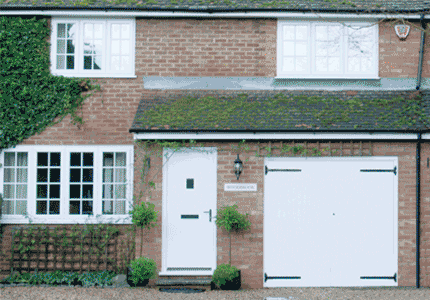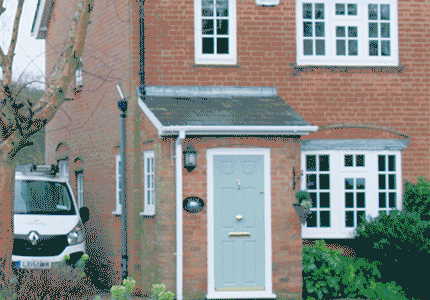Triple glazing and energy efficiency
Upgrading from single to double glazing is a considerable jump in energy efficiency (see below) and cost savings for energy bills. Replacing single glazing with A++ double glazing can save up to £235 a year on energy costs. But, some people think that the 23% upgrade (based on U-values) from energy efficient double to triple glazing is not enough to make any significant difference.
However, triple glazing should be considered on the incremental improvements and how that contributes to energy efficiency and comfort of living.
Passivhaus standards represent superior energy efficiency and the potential future for housing design.
Passivhaus was developed as a set of criteria and standards for an ultra-low energy house that has a minimal carbon footprint and consumes 90% less energy than the standard house in the UK.
The Passivhaus house has no traditional heating systems as it is so well insulated and designed to be efficient using only solar gain, mechanical ventilation and heat recovery.
The key features of the Passivhaus design are:
- Fabric insulation
- Triple glazed windows - not exceeding 0.80 W/m2K
- Airtight
- Ventilation
- Solar gain
- Compact shape/design
Superior energy efficient windows are integral to maintain the integrity of the Passivhaus design. Although, currently, in the UK, the best windows are rated at 0.99 U-value.
To retro-apply the full Passivhaus standards to a house might be a challenge. Choosing to fit triple glazing is a choice towards creating a house that takes advantage of progressive technology to be the most efficient it can be.
In Germany and Austria, triple glazing … has a market share of over 60%. Dr Benjamin Krick from Passivhaus Institute Germany
Climate change and the need to improve housing stock
Triple glazed windows are recommended on all new builds by the CCC for homes of the future needed today. Decarbonising and adapting the UK’s housing stock is critical for meeting legally-binding emissions targets by 2050.
The government has pledged commitments to reduce carbon emissions in the UK and has a focus on making the housing stock more energy efficient to meet those targets.
The government wants all housing to have an EPC rating of C or higher – currently, only 40% of UK housing meets this standard.
Government policies aside, 22% of carbon emissions currently come from our homes and this is where every person can significantly contribute to tackling climate change.
Improving your home to be as energy efficient as possible is ensuring that we all do our bit for the future of the planet.
Incremental factors add up and this is where the upgrade from double to triple glazing does make a difference.
Triple glazing or double glazing?
The biggest difference between double and triple glazing is how much less heat escapes from triple glazed windows. The visual representation of a thermographic image shows clearly how much more energy efficient triple glazing windows are compared to double glazed fitted in identical adjacent houses.


Triple glazed and double glazed windows made from the same material and to the same quality standard then the triple glazing should be around 20-30% more energy efficient.
Based on U-values, Everest energy efficient triple glazing is 58% more energy efficient than old double glazing and 23% more efficient than our Everest energy saving double glazing.
If you are comparing the efficiency of double and triple glazing, there are a few variables that will compromise the comparison:
- The depth of the glazed unit and space between the panes (more space = more efficiency)
- The gas used between the pane - air, Argon or Xenon (air is less efficient)
- Glass coatings such as Low E (more efficient)
- Quality of the frame (more chambers and insulation in the frame)
- The spacer bars used between the panes (warm edge = more efficient)
| Double glazing | Triple glazing |
|---|
| Energy rating | A+ | A++ |
| U Value (heat transfer) | 1.3 | 1.0 |
| G Value (solar gain) | 0.46 | 0.40 |
| L Value (air leakage) | 0 | 0 |
| Cost | ⭐⭐⭐ | ⭐⭐⭐⭐ |